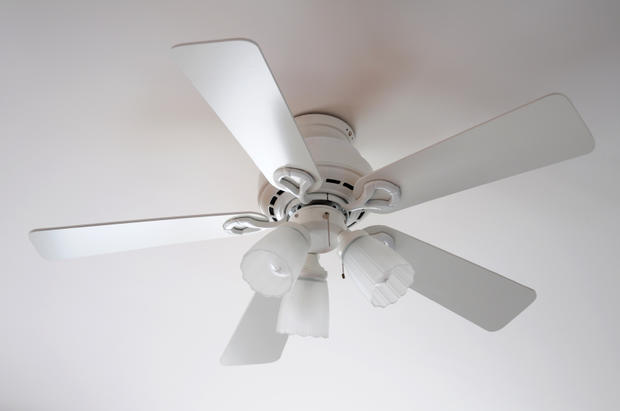What is a Whole House Fan and Can You DIY?
Summer is synonymous with good times, beachy fun and succulent barbecues shared with friends, but also with unrelenting, uncomfortable heat. It may be easy to escape by cranking the AC up high and leaving it there, but remorse can set in when the monthly energy bill arrives. There are wallet-friendly alternatives you might wish to consider, particularly if you are lucky enough to have a well-ventilated attic. If you've ever wondered if a whole house fan might be a smart choice for your family, here's what you need to know.
Just What Is a Whole House Fan?
This non-polluting option may save the average family up to 90 percent in energy costs over central air conditioning, yet provide enough cooling comfort to be effective in most climates. Whole house fan technology is thought to have originated in the steamy, sweltering South over 50 years ago and is a type of exhaust system able to powerfully pull hot air up and out of the attic, eliminating heat and staleness. The hot air is replaced with cooling breezes, pulled into the home through windows left open during the coolest hours of the day. Some families tout the usage of whole house fans over air conditioning, not only for their cooling power but also because of their lack of planet-busting greenhouse gas emissions. Others utilize their whole house fans as a complement to an already-existing air conditioning system.Can I Install It Myself?
Relying upon a professional to install your whole house fan may be a good idea, but doing it yourself is possible, provided you have a very high level of expertise and the brawn required for this two-person job. There are two types of whole house fans (belt-driven and direct-drive) and both require different, specific types of installation. Both rely upon an attic ventilation system which must be sized accurately. You will need to measure your home's interior square footage, sans the attic and basement areas, and multiply that number by three in order to determine the CFM (cubic feet of air moved per minute). This will help you to determine the fan size you will need. Dividing that number by 750 will yield how much attic ventilation is required. Whole house fans come with very explicit installation instructions but make sure to consult or work with an electrician who is familiar with local codes if you decide you have what it takes to DIY. Also make sure you purchase a tightly sealable winter cover for your fan, to keep it well protected when it is not in use.
This non-polluting option may save the average family up to 90 percent in energy costs over central air conditioning, yet provide enough cooling comfort to be effective in most climates. Whole house fan technology is thought to have originated in the steamy, sweltering South over 50 years ago and is a type of exhaust system able to powerfully pull hot air up and out of the attic, eliminating heat and staleness. The hot air is replaced with cooling breezes, pulled into the home through windows left open during the coolest hours of the day. Some families tout the usage of whole house fans over air conditioning, not only for their cooling power but also because of their lack of planet-busting greenhouse gas emissions. Others utilize their whole house fans as a complement to an already-existing air conditioning system.Can I Install It Myself?
Relying upon a professional to install your whole house fan may be a good idea, but doing it yourself is possible, provided you have a very high level of expertise and the brawn required for this two-person job. There are two types of whole house fans (belt-driven and direct-drive) and both require different, specific types of installation. Both rely upon an attic ventilation system which must be sized accurately. You will need to measure your home's interior square footage, sans the attic and basement areas, and multiply that number by three in order to determine the CFM (cubic feet of air moved per minute). This will help you to determine the fan size you will need. Dividing that number by 750 will yield how much attic ventilation is required. Whole house fans come with very explicit installation instructions but make sure to consult or work with an electrician who is familiar with local codes if you decide you have what it takes to DIY. Also make sure you purchase a tightly sealable winter cover for your fan, to keep it well protected when it is not in use.
A Few Points to Consider
- In order to maximize the effect of your whole house fan, make sure to keep windows open throughout the entire living area so as to prevent intense, concentrated suction in any one section of the house, or a dangerous backdraft in the furnace or water heater, capable of pushing carbon monoxide into your living quarters.
- Whole house fans can supply quiet cooling, but only if they're installed properly. An improperly installed fan can be quite noisy. In order to decrease the potential for noise, make sure to utilize rubber or felt gaskets during installation.
Corey Whelan is a freelance writer in New York. Her work can be found at Examiner.com.




